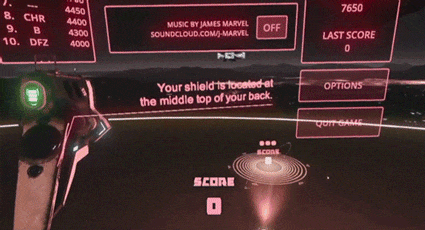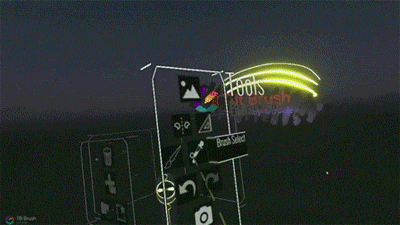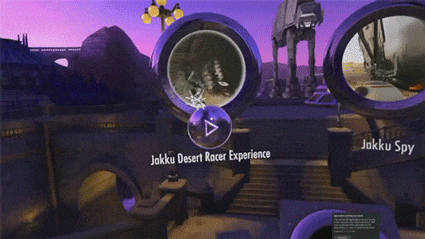I’ve been playing around with the HTC Vive for a few days and my mind is actually blown. I’ve found it to be a uniquely immersive experience like nothing I’ve encountered before. The Vive is just one of many headsets to hit the market, opening up a whole new world in which to explore cinema, gaming, art, education and countless other industries.
As a web developer, what I found immediately interesting was the contrast between modern UX paradigms that work well for websites, apps and traditional games to the UX and IxD found in the VR experiences I’ve enjoyed so far. I’ve always believed that good UX allows for greater usability, provides engaging interfaces that are easily navigated and built upon a logical IA. Content creators and developers still need to rely on users who are accustomed to performing various interactions, typically using a mouse, keyboard or touchscreen.
With the birth of consumer-ready VR, physical interactions now create amazingly immersive experiences. These experiences should be intuitive; they need to blend seamlessly around you, feel natural and effortless, and be simplistic. You should always be met with a feeling that whatever you can do in the real world you can replicate in the simulated one.
I’ve noted three main types of interactions used in a fairly consistent manner; these are motion tracking (gestures), controllers and head motion tracking.
Motion tracking (gestures)
The capture and mapping of motion tracking lets you interact physically with the virtual environment surrounding you. An example would be in Space Pirate Trainer, which captures the motion of reaching behind your back to trigger a swap between gun and shield.
The information marker shown attached to the gun is a call to action for the user to interact with the environment in a particular way. This action alone offers a unique experience that is satisfying from a user interaction perspective because it consists of a single natural movement.

Controllers
With controllers, users can perform problem-solving tasks and navigate the virtual environment with ease. It makes sense to have a natural interface that is familiar to the user so as to create effortless and simple interactions like those found in Tilt Brush.
When I think of a painter, I think about how he or she holds the palette and uses it to mix colours. With Tilt Brush, one controller becomes your brush and the other your palette. You take the natural stance of a painter and it feels almost natural to paint the way a painter would.

Head motion tracking
How do you navigate without a controller? If you have the Samsung Gear VR or even Google Cardboard, you may be familiar with a primary navigation tool called a reticle (a visual aid to track targets). With a reticle, you often still need to physically interact with the headset via a button press.
In May 2016, Disney released all of its 360 video experiences in a single app. While my initial instinct was to point and click the controller, I soon realised that head movement and my focus were all I needed.
Using head motion tracking as a navigation interaction is a little new to me. A marker like the loading icon is a clear indicator that something is about to happen if you stay focused. It doesn’t feel the most comfortable or natural, but it does demonstrate how traditional interactions may not always apply.

Bringing VR to the masses
VR is expected to become more readily accessible to consumers. Both Mozilla and Google are working on bringing VR to the browser. The creation of A-Frame and Web-VR ties in nicely with the more than five million Google Cardboard units that have already been sold in addition to one million estimated active Gear VR users.
Google will also be releasing Google Daydream, a VR platform which includes an intuitive controller and headset for android devices, making the mobile VR space very exciting for content creators.
There are many options for consumers, as well as a few price points. At the high end is the Oculus Rift and HTC Vive, in the mid range is the Sony Playstation VR (PSVR) and in the low to semi-mid range is the Google Cardboard and Samsung Gear VR.
No matter what entry level into VR you choose, it is an exciting space, and the opportunity to create new experiences is one I will follow closely. Overall, some experiences feel more natural and comfortable than others. Content creators each have their own hurdles and experiences can only improve over time.
This post is also on Medium